When exactly was it that yellow left the consciousness of modern watchmaking?
I know . . . I can’t think of the exact year, either. But let’s take a look to see if we can pin it down.
“When I started in the 1980s in the watchmaking industry, we were really only using 2N yellow gold for cases and bracelets,” Zenith CEO Aldo Magada recently reminded me. “Later, Cartier went for 3N because it was a little warmer.”
In fact, Cartier’s first use of 3N gold in the modern, post-Quartz Crisis era was the Driver model, which was released in 1997 in a limited edition of 150 pieces in honor of the 150th anniversary of Cartier’s founding.
Powered by a LeCoultre movement, the Driver was a re-edition of the Cartier’s famous driver’s watch from the 1930s, so named because the curved case allowed the watch to be worn on the side of the wrist so the time could be seen without having to take a hand off the steering wheel.
This is not to say that Cartier had the only 3N gold timepiece on the market in that era. In fact, there was a handful by this time. But certainly Cartier was the brand that helped to popularize the use of 3N gold.
And at some point thereafter – around the early 2010s – yellow gold simply faded away from regular use. Watch cases and bracelets were no longer being offered in the haute horlogerie arena in yellow gold, replaced by pink (4N) or red (5N) gold and a variety of more understated and partially innovative white metals including platinum and white gold.
Let’s be honest: over time, and with the advent of the internet and a new generation of enthusiasts, yellow gold has come to be associated with the adjective “old-fashioned.”
Old-fashioned or not, here it is
A few years ago a short-lived nostalgic wave of two-tone watches in stainless steel and pink gold tried to make a feeble reentry, but most likely it jarred too many flashbacks of 1990s yellow-gold-and-steel two-tone, and it quickly faded away again.
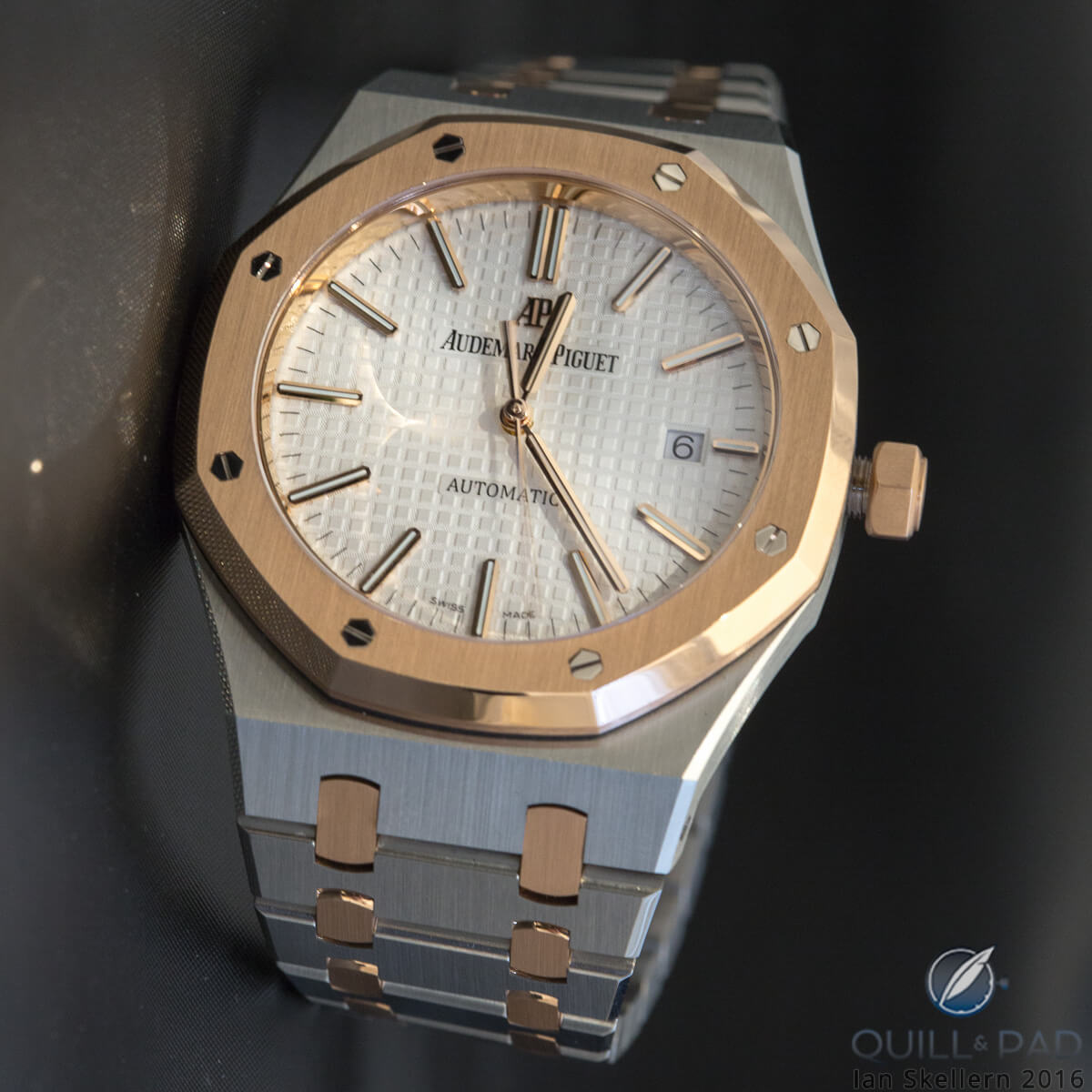
Audemars Piguet Two-Tone Selfwinding Royal Oak in a 41 mm stainless steel and pink gold case from 2015
Except, that is, for Audemars Piguet’s 2015 introduction of quartz and automatic Royal Oaks in stainless steel and pink gold cases and bracelets in a variety of sizes.
Then later in 2015, MB&F introduced a surprising novelty – and I use this word purposefully and with its full English-language meaning: a yellow gold version of the Legacy Machine 101 in a yellow gold case with a superb yellow gold dial sporting an exquisite frosted finish.
“The main reason [for launching this timepiece in a yellow gold variation] was to really build on the traditional nature of the frosted finish,” said Charris Yadigaroglou, spokesperson for MB&F. “As you know, we have never done yellow gold before – Max [Büsser, brand founder] is usually not a big fan – but for this specific, very traditional piece we felt it made total sense.”
There were 51 pieces of the Legacy Machine 101 Frost in total: 33 pieces in red gold and 18 pieces in yellow gold. This timepiece represented the very first yellow gold watch in MB&F’s ten-year history.
“The yellow gold Frost was definitely a success for us,” Yadigaroglou continued. “But it’s difficult to draw any general conclusions because the edition was so limited. We sold the 18 pieces to our retailers easily during Baselworld 2015, and the sell-through was also very strong.”
Yadigaroglou concluded our short conversation on yellow gold by commenting that MB&F received many very positive comments from collectors, journalists, and retailers, who appreciated the use of yellow gold as a material for this particular timepiece. For more about Legacy Machine 101 Frost, please see LM101 Frost By MB&F: It’s Surprisingly Warm.
So far, no other brand that I’m aware of has followed suit with yellow gold . . . until SIHH 2016, when Audemars Piguet plopped an entire collection of new Royal Oaks down in front of me . . . all in 18-karat yellow gold cases and bracelets.
I have to admit my surprise likely showed. And I’m sure that that was a common reaction throughout the fair.
Audacious in 1972, audacious in 2016?
The Royal Oak was the first modern watch carrying a high haute horlogerie price tag to be cased in stainless steel. Introducing the steel Royal Oak in 1972 was a very bold move, and one that caused the manufacture’s strategists a few sleepless nights before it was finally accepted for what it was.
The Royal Oak certainly changed the watch industry’s feel for luxury timepieces in the 1970s, a tectonic shift that helped to usher in today’s modern, casual feel for luxury.
Taking all of that into consideration, what is it that Audemars Piguet hopes to achieve with its new trend-bucking yellow gold versions of the Royal Oak?
Is it a precursor to a trend that is just about to break? Or is it the ability to buck a non-trend?
Or is Audemars Piguet just trying to be edgy?
“Audemars Piguet has done an amazing job of creating demand and a following. It is probably the only company out there that can introduce something new (i.e., yellow gold) when no one else is using it and sell it,” says Armen Darakjian, owner and operator of Darakjian Jewelers, located in Birmingham, Michigan, just outside of Detroit.
Paul Boutros of Phillips Watches sees it slightly differently, but no less positively. “I love the courage of Audemars Piguet to ‘bring back’ yellow gold in a big way,” he says. “My prediction is that yellow gold will make a comeback across luxury brands for men’s watches. In my opinion, the yellow gold Royal Oaks will see successful sales results.”
Collector, auctioneer, and journalist Kristian Haagen, author of Hashtags And Watches, has yet another viewpoint. “I actually like yellow gold better than red gold; it has a ‘European’ approach that I appreciate. That said, 41 mm does not make as much sense as 39 mm would. I could see my better half wearing the 33 mm version with blue dial, though.”
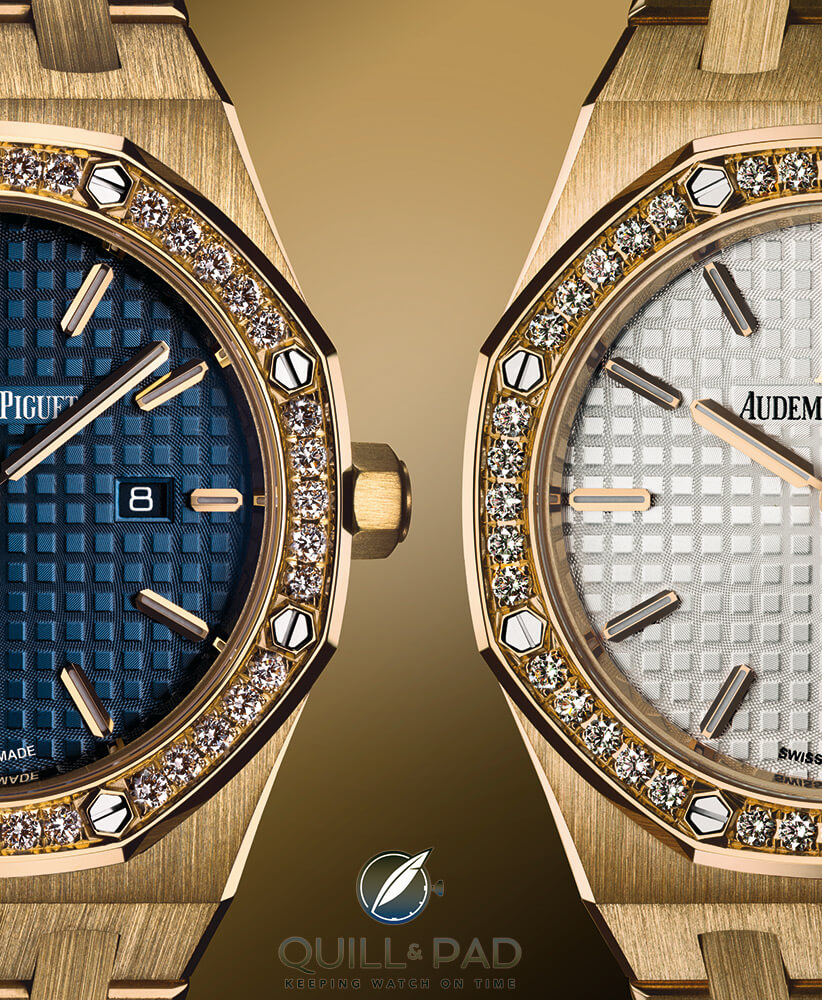
Two 33 mm diamond-set quartz models from the 2016 Audemars Piguet Royal Oak collection in yellow gold
In my opinion, there is less yellow gold these days, too, because of its bling factor; many collectors like to attract less attention to themselves in this day and age of social and other media. Haagen concurs. “In times like these, yellow gold and red gold watches are for indoor wear, behind guarded gates, or at a VIP lounge with a couple of broad-shouldered bouncers to watch your wrist. White gold or platinum makes more sense. That said, I could see myself wearing a 39 mm yellow gold Royal Oak, especially on a nice strap. On bracelet, though, it is a lot of gold.”
Quill & Pad’s own GaryG is a longtime collector of fine watches. “I’ve owned, and still own, a number of yellow gold watches,” he says. “The most notable of these was perhaps a Vacheron Constantin Overseas Dual Time in yellow gold on a very weighty gold Maltese Cross bracelet. It was known to one and all as the ‘Bling Special.’ While the Bling Special eventually departed in favor of a more subdued titanium/stainless steel Overseas Chronograph, the happy memories of having that weighty chunk of gold on my wrist still remain.”
So what does GaryG think of Audemars Piguet’s return of yellow gold as a theme for new products in 2016? “While I’m not unhappy to see it, I’ve been hearing for at least five years now that yellow gold is either the new pink gold (less showy, more classic) or the new steel (a step up to a precious metal for those who still prefer a traditional look). It hasn’t caught on yet, and I’m thinking that this likely isn’t the year, either.”
“That said, I quite liked the look of the white dialed pieces, especially the 41 mm Royal Oak Chronograph,” he continued. “If I ever do decide to take the plunge back into a full-gold-bracelet look, that piece would be a candidate for me.”
A few recent stats from the Digital Luxury Group also point to how astute Audemars Piguet has been with its new yellow gold Royal Oak collection.
According to the DLG, consumer interest in white, yellow, and pink gold has increased altogether since September 2015. Year on year, interest in pink gold has increased 187 percent, white gold 100 percent, and yellow gold 78 percent.
To compare, in the same space of time interest in titanium has increased by 50 percent, stainless steel by 34 percent, and platinum 33 percent.
All in all, the chart above shows that despite economic uncertainty, overall interest in gold – even yellow gold – continues to rise.
So what does Zenith’s Magada have to say regarding the possible return of yellow gold at his brand? “Yes, we are thinking about it because I believe yellow gold will come back. Now some markets are asking for yellow gold. But to be honest, yellow gold is just not yet here. We don’t have any yellow gold models at the upcoming 2016 Baselworld fair.”
And from what I’ve been able to discover about the upcoming Baselworld introductions, neither does anyone else. So what do you think: is this a precursor to a yellow gold trend, the ability to be successfully edgy, or just plain crazy? Let us know your thoughts.
For more information on this audacious new collection of Royal Oaks, please visit www.audemarspiguet.com/yellow-gold.
Royal Oak Perpetual Calendar
Case: 41 mm, yellow gold
Movement: automatic Caliber 5134
Functions: hours, minutes; perpetual calendar with date, weekday, month, moon phase, leap year, calendar week
Price: $95,700
Royal Oak Chronograph
Case: 41 mm, yellow gold
Movement: automatic Caliber 2385
Functions: hours, minutes, seconds; date, chronograph
Price: $56,600
Royal Oak Selfwinding
Case: 37 mm, yellow gold
Movement: automatic Caliber 3120
Functions: hours, minutes, seconds; date
Price: $23,800 to $44,100
Royal Oak Quartz
Case: 33 mm, yellow gold with 40 brilliant-cut diamonds (0.73 ct)
Movement: quartz Caliber 2713
Functions: hours, minutes; date
Price: $11,500 to $37,800 depending on diamond setting
Trackbacks & Pingbacks
-
[…] Further reading: Will Yellow Gold Find Its Way Back To The Wrist Soon? Audemars Piguet Thinks So With A Whole New Col…. […]
Leave a Reply
Want to join the discussion?Feel free to contribute!





















































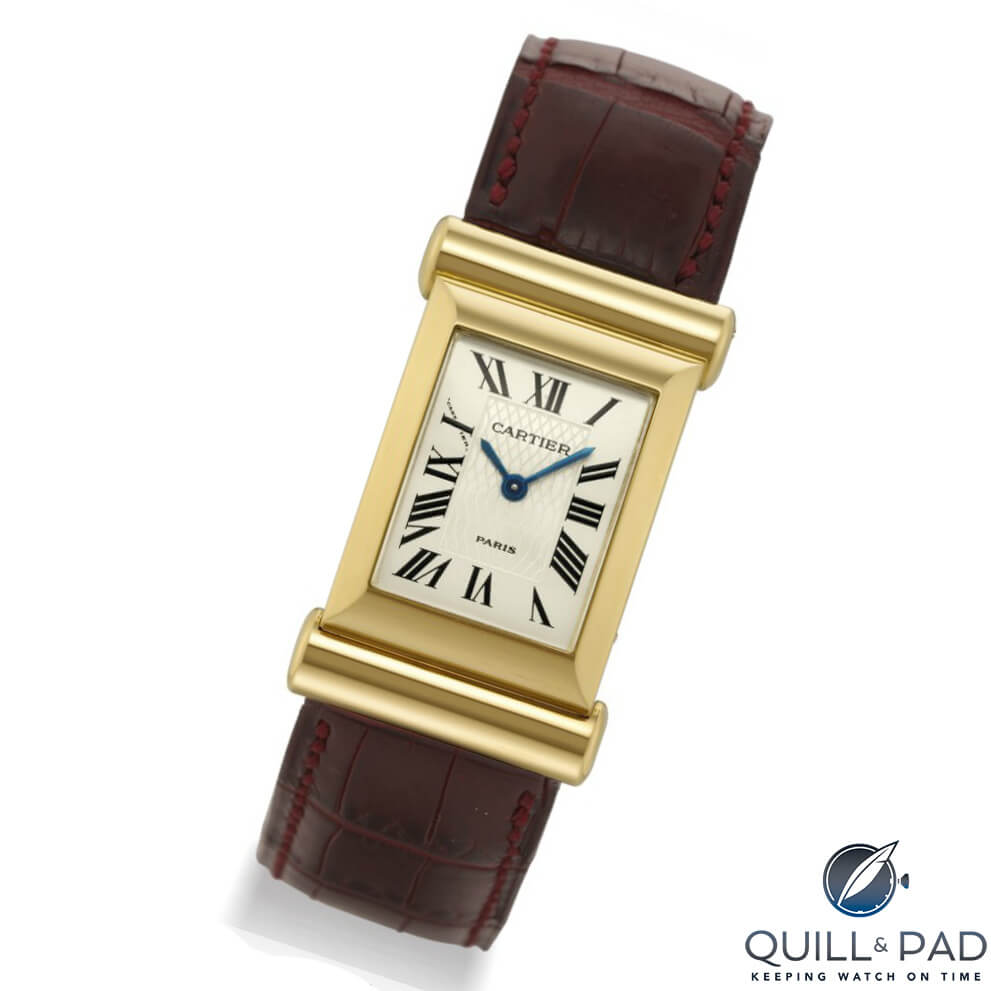
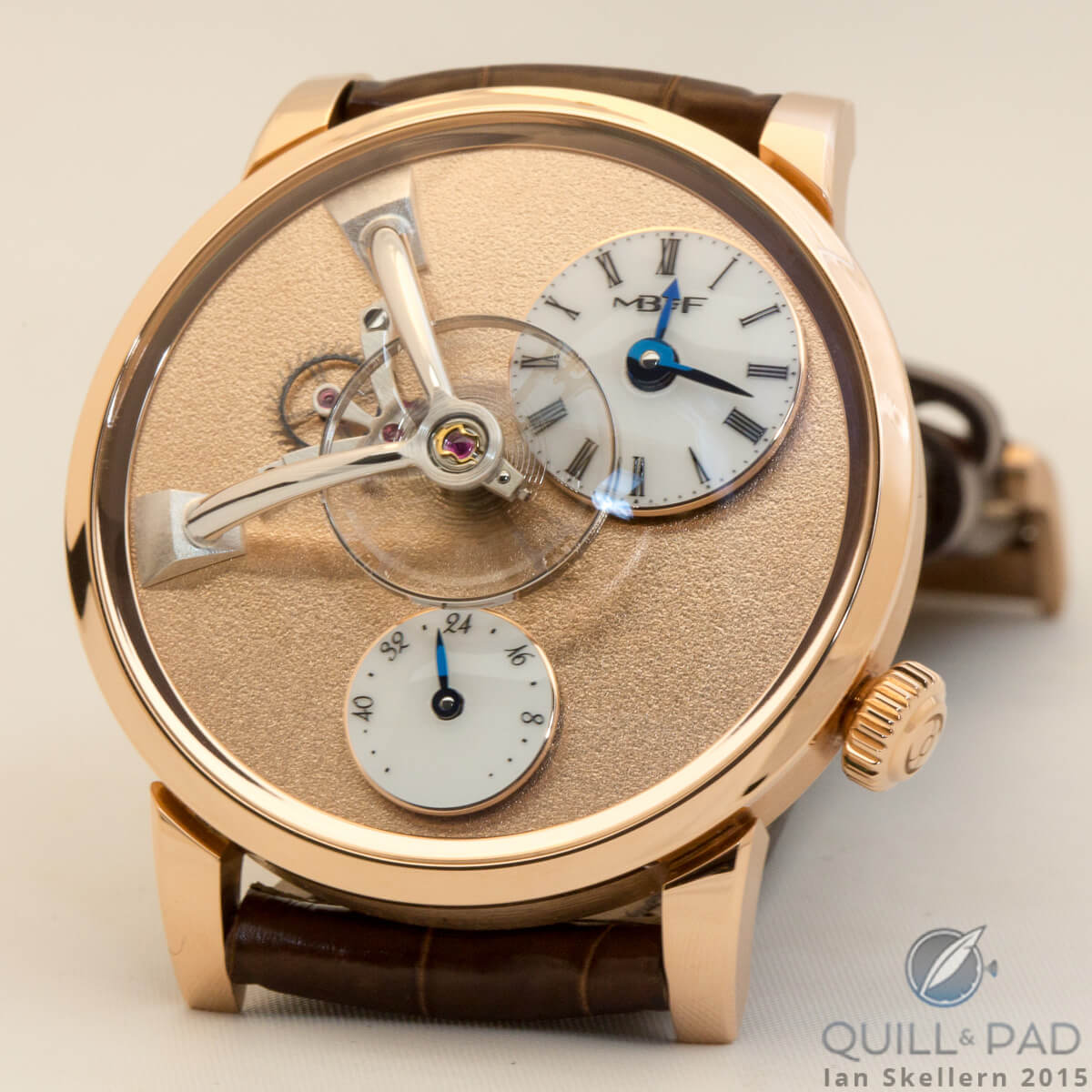
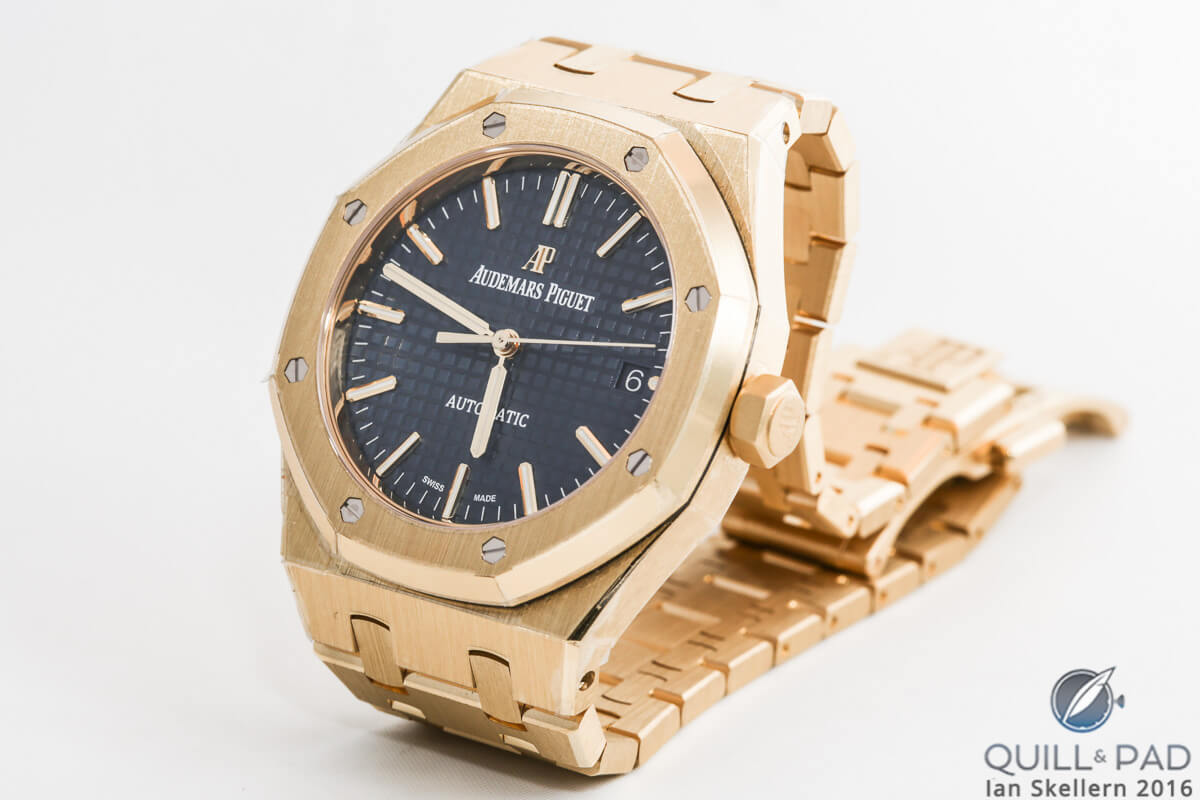
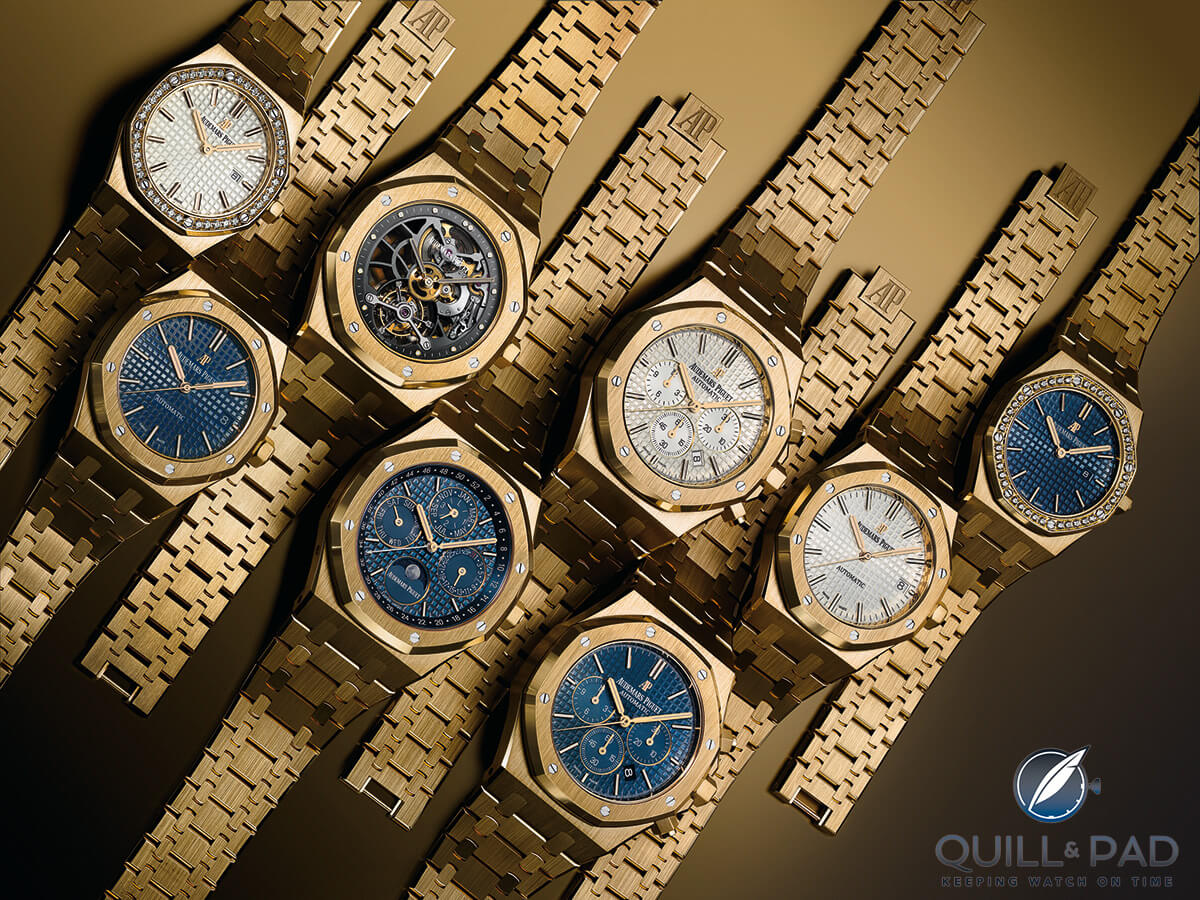
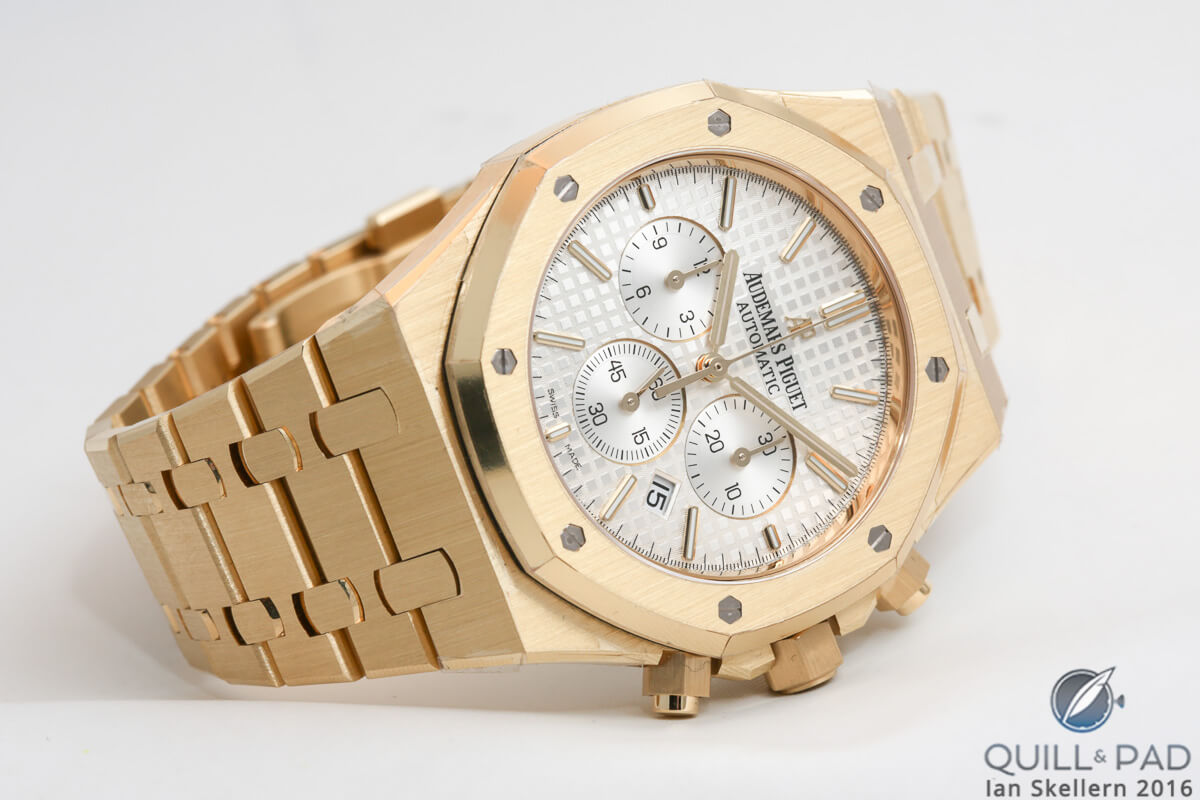
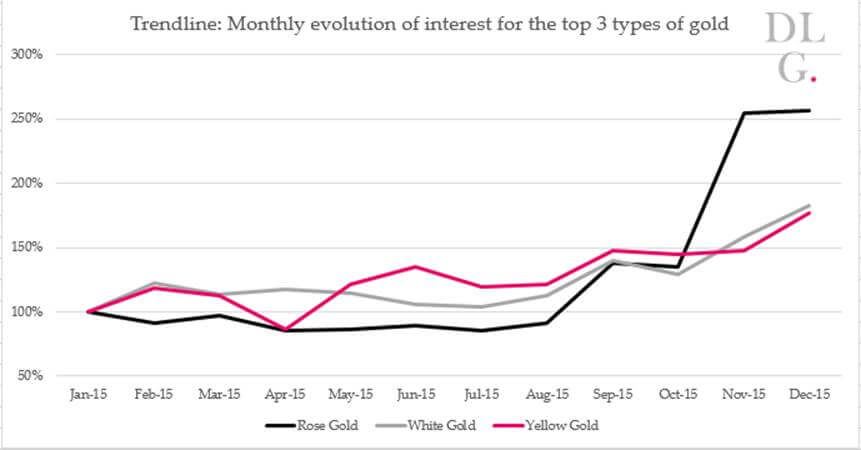
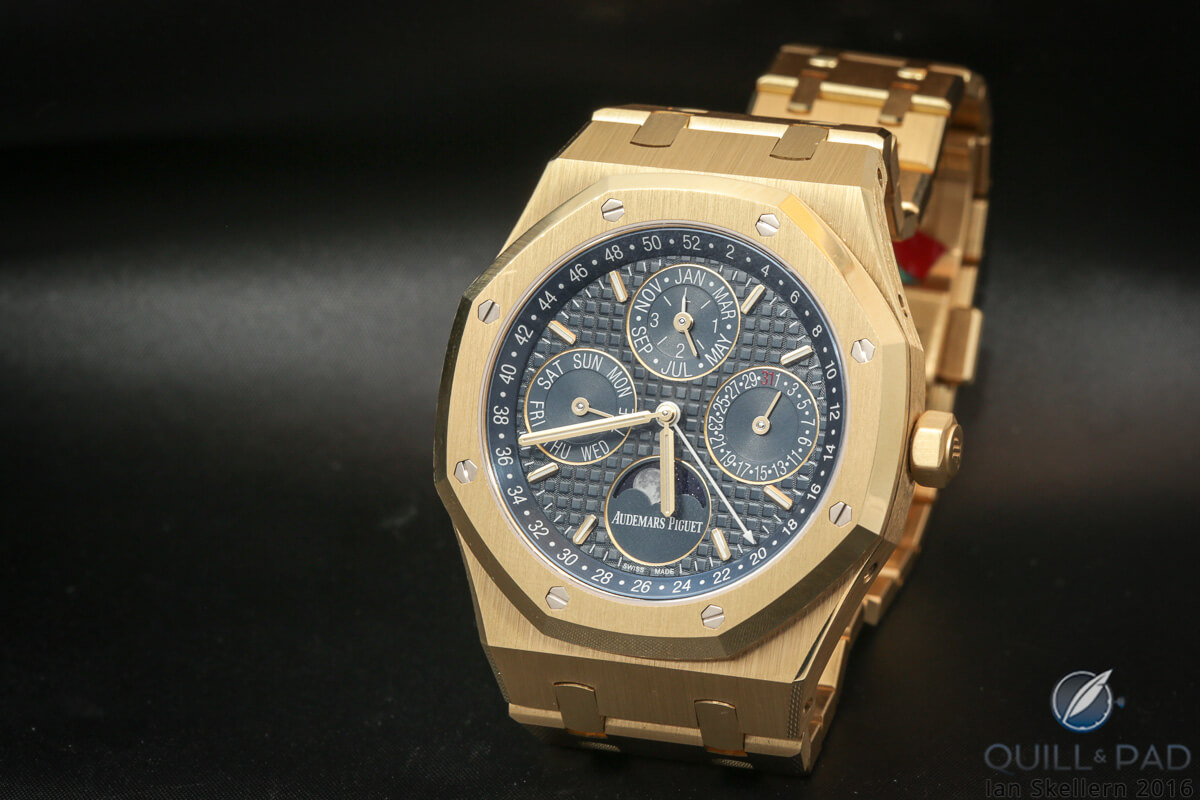
Too bad the new APs aren’t 39mm, especially for a gold watch. Just to reduce the possible bling factor.
T